If you’re into digital marketing or SEO, have you ever wondered what a crawl budget is and why it’s crucial for digital marketing agencies? If you work in the realm of SEO, you’ve likely come across this technical term. But what exactly is crawl budget, and how does Googlebot measure it?
Let’s explore this hardly ever-mentioned side of technical SEO and why it’s essential to grasp this concept to maximise its advantages for your digital marketing efforts. We’ll also discuss how to measure, optimise, and make the most of your website’s crawl budget, along with the best practices and tools to achieve this.
What is Crawl Budget and How Does Googlebot See It?
Crawl budget refers to the number of pages on your website that search engine bots, such as Googlebot, crawl within a specific time frame. This budget is not unlimited, and search engines allocate a certain amount of resources for crawling each site. Googlebot, Google’s web crawling bot, is responsible for indexing the content on the web, and it measures the crawl budget to efficiently crawl and index web pages.
1. Measuring Crawl Budget
To measure your website’s crawl budget, you can access the Google Search Console. This tool provides valuable insights into the crawl status of your website, including the number of pages crawled per day. It also offers data on the crawl rate, which indicates how quickly Googlebot crawls your site. Analysing this information is essential for understanding your current crawl budget and planning optimisations.
2. Googlebot’s Perspective
From Googlebot’s perspective, it sees the crawl budget as a finite resource, and it needs to allocate it strategically to ensure efficient crawling and indexing. Googlebot considers various factors when determining which pages to crawl, including the page’s importance, freshness, and overall value. Pages that are frequently updated, high-quality, and linked to other authoritative websites are more likely to be crawled regularly.
3. The Role of Robots.txt and Meta Robots Tags
To control Googlebot’s behaviour and how it utilises your website’s crawl budget, you can utilise the robots.txt file and meta robots tags. These tools allow you to specify which parts of your site should be crawled and indexed and which should be excluded. By strategically using these directives, you can ensure that Googlebot prioritises the most valuable content on your site.
Measuring and Increasing Your Website’s Crawl Budget
Measuring your website’s crawl budget is just the beginning. To make the most of it and improve your site’s visibility on search engines, you need to know how to increase your crawl budget. Let’s explore some essential steps to achieve this.
1. Optimise Site Speed and Performance
One of the key factors that affect the crawl budget is site speed and performance. A slow-loading website can hinder Googlebot’s ability to crawl your pages efficiently. To boost your crawl budget, focus on optimising your website’s speed by compressing images, using content delivery networks (CDNs), and minimising the use of heavy scripts and resources.
2. Fix Crawl Errors and Broken Links
Crawl errors and broken links can be a significant drain on your crawl budget. Googlebot might get stuck or give up crawling when it encounters dead ends or error pages. Regularly monitor and fix these issues to ensure a smoother crawl experience for search engine bots.
3. Prioritise Quality Content
High-quality, valuable content is more likely to attract Googlebot’s attention. Invest in creating compelling content that is relevant to your target audience. By focusing on quality, you increase the chances of Googlebot regularly revisiting and indexing your pages.
The Importance of Optimising Your Crawl Budget
Optimising your crawl budget isn’t just a technical SEO task; it has a profound impact on your overall digital marketing services. Let’s explore why this optimisation is crucial for your online presence.
1. Enhanced Search Engine Visibility
A well-optimised crawl budget ensures that your most important and valuable pages are crawled and indexed promptly. This, in turn, leads to improved search engine visibility. When Googlebot consistently indexes your high-quality content, it’s more likely to appear in search results, attracting organic traffic to your website.
2. Efficient Resource Utilisation
Optimising your crawl budget means that search engine bots are not wasting resources crawling irrelevant or low-quality pages. This efficiency allows Googlebot to allocate more resources to the pages that matter most, enhancing the overall user experience and your website’s SEO performance.
3. Better User Experience
A well-optimised crawl budget also translates to a better user experience. When your site ranks higher in search results due to effective crawling and indexing, it’s more accessible to users. This can lead to increased organic traffic, higher user engagement, and ultimately, better conversion rates.
Best Practices and Common Pitfalls for Crawl Budget Optimisation
While optimising your crawl budget is essential, there are best practices to follow and common pitfalls to avoid. Here are some of the key do’s and don’ts for achieving successful crawl budget optimisation.
1. Do Regularly Monitor Your Crawl Budget
Regularly monitoring your website’s crawl budget through tools like Google Search Console is crucial. This allows you to stay updated on the crawling status and make adjustments when needed. Keeping a close eye on crawl data ensures that you can quickly address any potential issues.
2. Don’t Block Essential Pages
One common mistake is accidentally blocking essential pages with robots.txt or meta robots tags. Make sure to review and update these directives carefully to avoid excluding important content from Googlebot’s crawling process.
3. Do Focus on Mobile Optimisation
With Google’s mobile-first indexing, mobile optimisation is critical for crawl budget optimisation. Ensure that your website is responsive and provides a seamless user experience on mobile devices to maximise your crawl budget for both desktop and mobile indexing.
Optimising your crawl budget not only enhances SEO but also impacts your overall digital marketing services, making it a crucial aspect of online success. Remember to follow best practices, avoid common pitfalls, and regularly monitor your crawl budget to reap the full benefits of this optimisation process.
Hand Picked Articles















